
Roots
The quiet hum of the night, a time for rest and renewal, holds a special significance for our hair. Many have observed the subtle shifts in their strands after a night’s repose, noticing sometimes a parched dryness or a frustrating tangle. It prompts a thoughtful inquiry ❉ can the consistent use of a silk bonnet truly transform hair’s innate flexibility and its delicate moisture balance?
This query beckons us to consider the very foundations of hair’s being, its structure, and its relationship with the world around it. We consider the science that explains why some materials offer a tender shield, while others can inadvertently contribute to hair’s vulnerabilities.
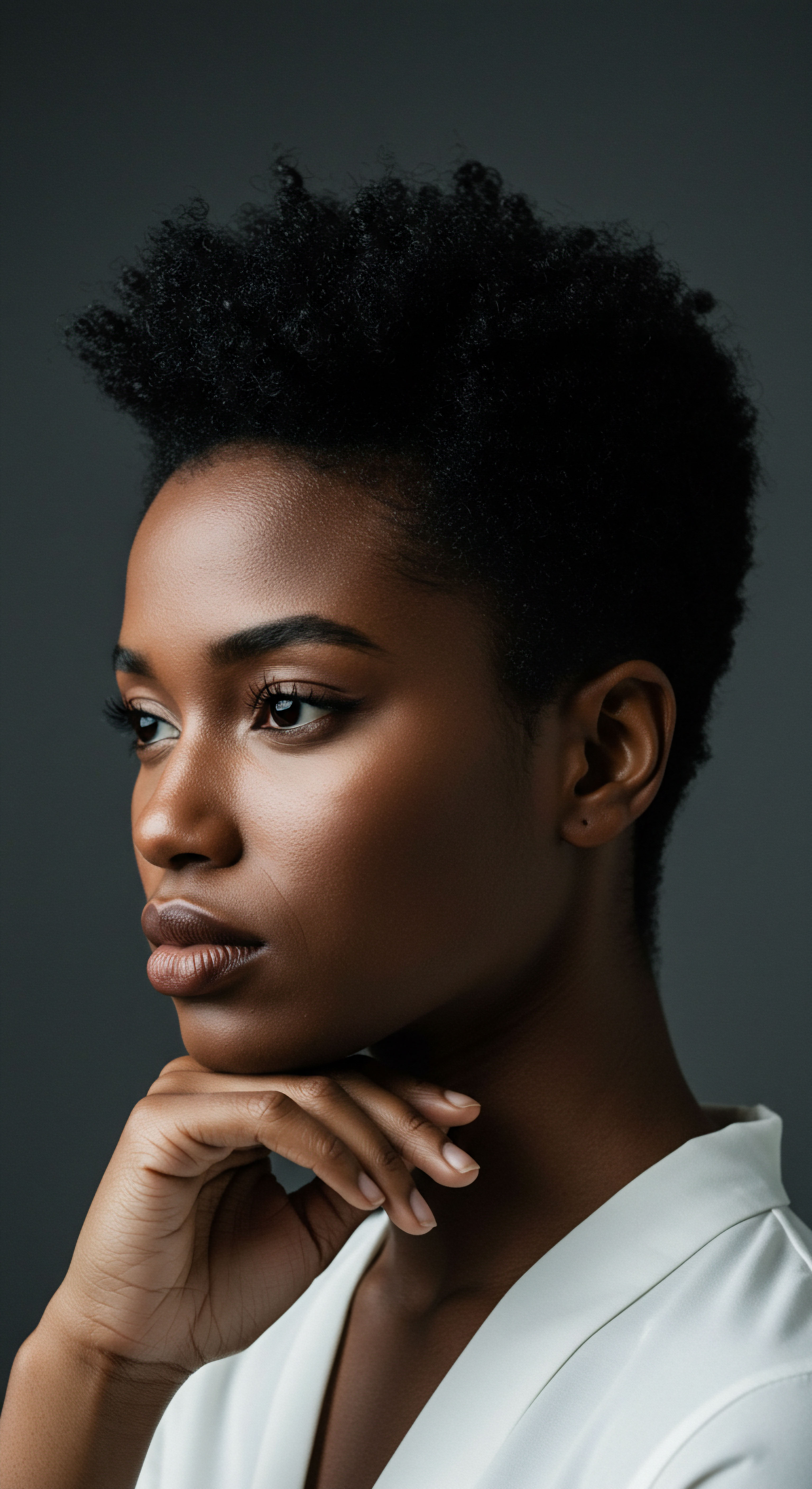
Hair Anatomy and the Dance of Water
At its very core, a strand of hair is a marvel of biological engineering. Each individual hair shaft, visible above the scalp, is primarily composed of a protein known as Keratin. This remarkable protein, also found in our nails, grants hair its resilience and its capacity to stretch. The hair shaft itself comprises three distinct layers ❉ the medulla, the cortex, and the cuticle.
The cortex, the central and most substantial layer, contains the keratin cells that provide hair with its strength and elasticity. Surrounding this is the cuticle, a protective outer layer made of overlapping scales, much like tiny roof tiles, which shield the inner structures from damage.
The interaction of hair with water is a fascinating and dynamic process. Hair is a Hygroscopic Material, meaning it readily absorbs moisture from the surrounding air. The water content within hair is not static; it fluctuates with the relative humidity of the environment.
When water enters the hair, it increases the space between keratin proteins, causing both the cortex and cuticle to swell, making the hair structure more flexible. This flexibility is what allows hair to stretch without breaking, a property known as elasticity.
Hair’s innate flexibility and ability to retain moisture are deeply tied to its keratin structure and its dynamic interaction with environmental humidity.
The strength of hair’s elasticity relies on several factors, including hydrogen bonds between water molecules and keratin strands, and disulfide bonds between amino acid groups within the protein structure. When hair is adequately hydrated, these hydrogen bonds are plentiful, contributing to its pliability. Conversely, dehydrated hair loses its stretch, becoming brittle and prone to damage, similar to how leather left in dry conditions loses its suppleness.

The Textured Hair Classification Spectrum
Textured hair, with its unique coils, curls, and waves, possesses a distinct morphology that influences its interactions with environmental factors and protective measures. The curl pattern, ranging from loose waves to tight coils, impacts how easily moisture can escape and how prone the hair is to tangling and breakage. The natural curves of textured hair mean there are more points of contact between strands, which can lead to increased friction if not properly cared for.
Understanding the specific classification of one’s textured hair can guide care practices. While various systems exist, they generally consider the diameter of the strand, the tightness of the curl, and the overall density. These characteristics collectively influence hair’s porosity, which describes its ability to absorb and retain moisture. Hair with a compromised cuticle, often from environmental exposure or chemical treatments, tends to be more porous, allowing water to enter and exit with greater ease, sometimes leading to quicker dehydration.
- Hair Porosity ❉ A key factor in how hair manages water, indicating its ability to take in and hold moisture.
- Hair Cuticle Integrity ❉ The condition of the outer layer, which acts as a shield against moisture loss and external damage.
- Keratin Protein Structure ❉ The foundational building blocks that grant hair its inherent strength and elasticity.

The Essential Lexicon of Hair Wellness
To truly appreciate the conversation around hair wellness, particularly for textured hair, a shared language is helpful.
| Term Elasticity |
| Meaning for Hair The hair's capacity to stretch and return to its original shape without breaking. |
| Term Moisture Balance |
| Meaning for Hair The ideal equilibrium of water content within the hair shaft, preventing both dryness and excessive absorption. |
| Term Friction |
| Meaning for Hair The resistance created when hair rubs against surfaces, potentially leading to cuticle damage and breakage. |
| Term Porosity |
| Meaning for Hair The hair's ability to absorb and retain moisture, influenced by the condition of the cuticle. |
| Term Protective Style |
| Meaning for Hair Any hairstyle or covering that minimizes manipulation and exposure to environmental stressors, reducing damage. |
Each of these terms plays a role in the health and vitality of textured hair. When we discuss improving hair’s flexibility and hydration, we are addressing these fundamental properties. The goal is to cultivate an environment where hair can maintain its structural integrity and its optimal water content, allowing it to flourish.

Ritual
Stepping from the quiet contemplation of hair’s fundamental nature, we arrive at the rhythm of daily life, where conscious choices shape the vitality of our strands. The practical wisdom of consistent care, particularly the nightly ritual of donning a silk bonnet, offers a tangible path toward supporting hair’s flexibility and maintaining its delicate moisture equilibrium. This segment delves into the tangible practices that bring the science of hair health into our hands, offering gentle guidance on how consistent protective measures can truly transform the daily experience of textured hair.

The Silk Bonnet as a Gentle Guardian
The act of wearing a silk bonnet during sleep is a time-honored practice, particularly within textured hair communities, and its benefits are rooted in the very properties of silk itself. Unlike conventional cotton pillowcases, which can absorb moisture and create abrasive friction, silk offers a remarkably smooth surface. This minimal friction allows hair to glide effortlessly across the fabric, significantly reducing mechanical stress, tangling, and breakage that can occur from tossing and turning during the night.
The surface of a cotton pillowcase, when viewed under a microscope, appears as a coarse landscape of fibers that can snag and pull at the hair’s cuticle layer. Over time, this constant rubbing can lift, chip, or even break these protective scales, leaving the inner cortex vulnerable to moisture loss and damage. Silk, by contrast, presents a remarkably different interaction. Its smooth, tightly woven fibers create a surface where hair experiences minimal resistance, thus preserving the integrity of the cuticle.
A silk bonnet creates a gentle, low-friction environment for hair, actively working to preserve cuticle integrity and reduce mechanical stress overnight.
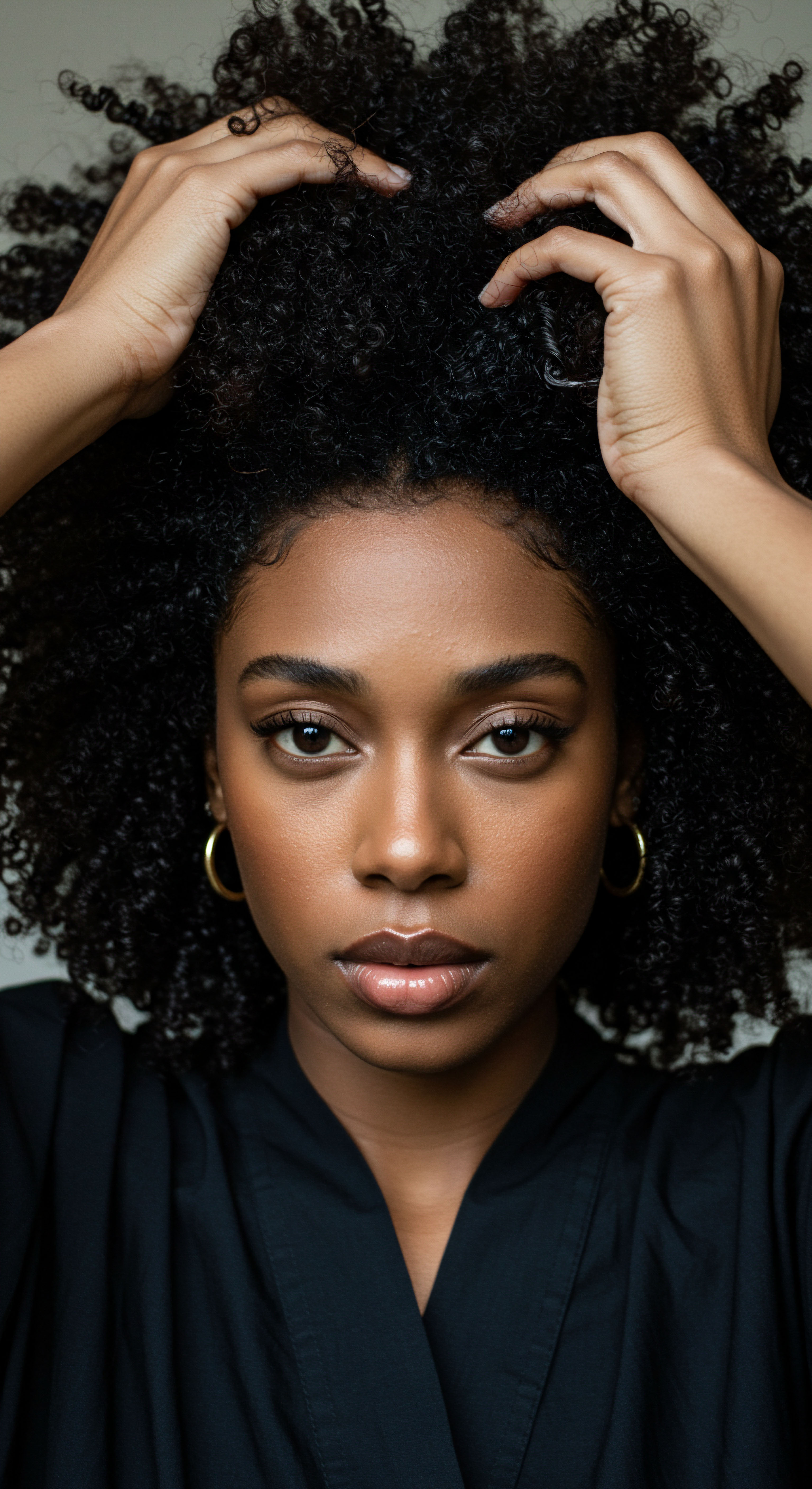
How Does Silk Aid Hair Elasticity?
Hair elasticity, the ability of hair to stretch and return to its original state, is a hallmark of healthy strands. When hair is dry or damaged, its elasticity diminishes, making it more prone to snapping. The protective environment fostered by a silk bonnet directly supports hair elasticity by minimizing external stressors.
Consider the constant tension and pulling that hair experiences during sleep on a rough surface. This mechanical fatigue, repeated night after night, can weaken the hair shaft over time, compromising its ability to stretch without breaking. A silk bonnet mitigates this.
By reducing friction, it lessens the strain on individual hair strands, allowing them to retain their natural flexibility. This consistent reduction in stress helps to preserve the internal protein structures, particularly the keratin, which are responsible for hair’s inherent springiness.
Furthermore, some research suggests that silk proteins themselves, specifically sericin, can contribute to hair health. Sericin, one of the two main proteins in silk, has been shown to bind to keratin in hair, forming a protective layer that can help prevent moisture loss and improve the hair’s surface. While direct evidence linking silk bonnet use to increased protein content in hair is limited, the occlusive nature of a bonnet can certainly enhance the absorption and retention of hair care products containing beneficial proteins or moisturizing agents applied before sleep.

Does a Silk Bonnet Truly Seal in Moisture?
The claim that silk bonnets help balance hair moisture is well-supported by their non-absorbent nature. Unlike cotton, which readily absorbs oils and moisture from hair, silk is less absorbent. This property means that natural oils and any applied leave-in conditioners or moisturizers remain on the hair shaft, rather than being wicked away by the fabric.
This retention of moisture is particularly beneficial for textured hair, which often has a more open cuticle structure, making it prone to dehydration. By creating a barrier between the hair and the dry ambient air, especially in low humidity environments, a silk bonnet helps to maintain the hair’s hydration levels throughout the night. This occlusive effect, similar to how occlusive dressings aid skin hydration, helps to reduce transepidermal water loss from the hair shaft.
- Reduced Friction ❉ Silk’s smooth surface minimizes rubbing against hair, preventing mechanical damage and preserving the cuticle.
- Moisture Preservation ❉ Silk’s low absorbency ensures that hair’s natural oils and applied products remain on the strands, preventing dehydration.
- Cuticle Protection ❉ By safeguarding the cuticle, silk helps maintain the hair’s internal moisture balance and structural integrity.
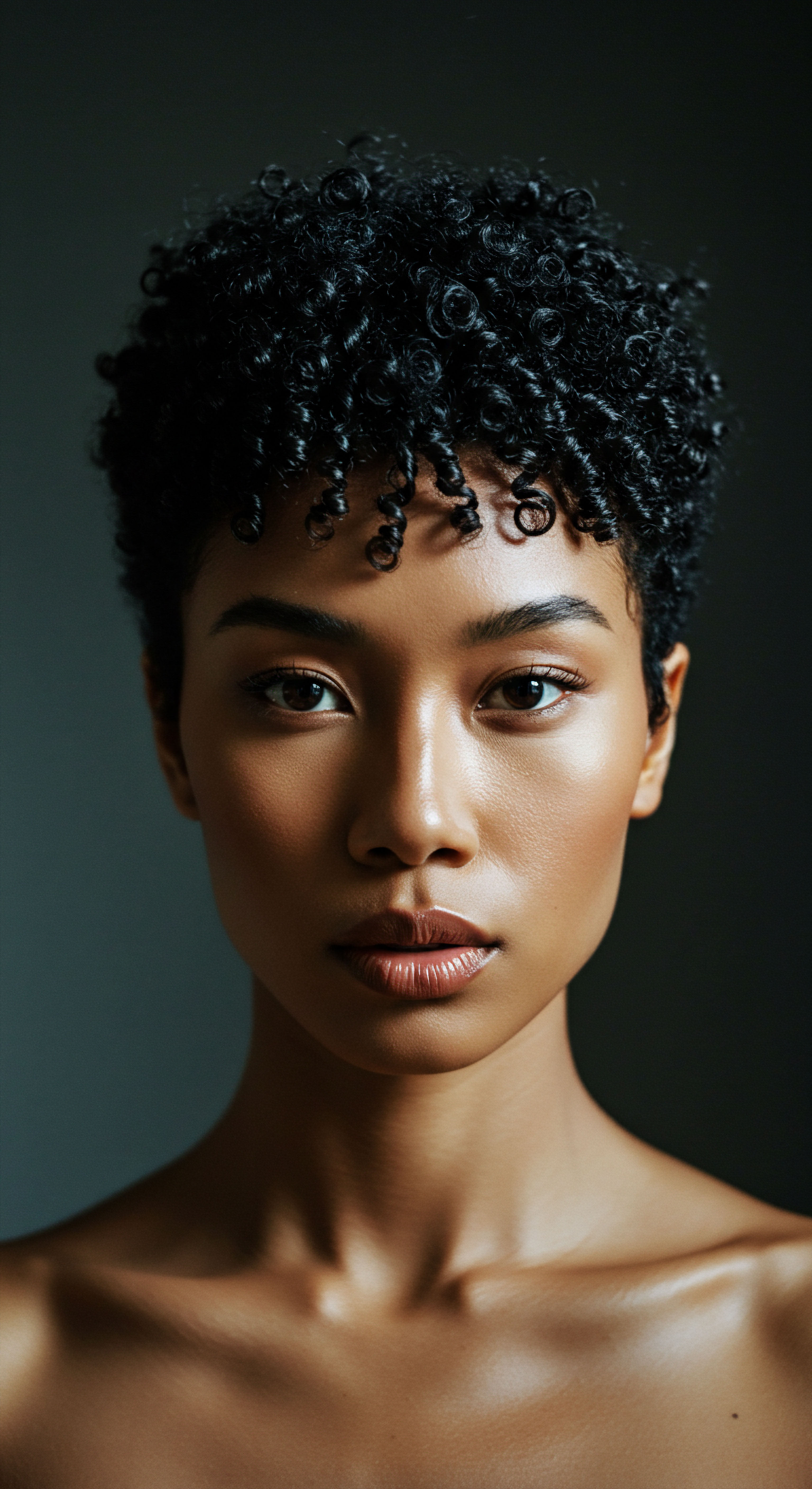
Cultivating a Nighttime Sanctuary for Hair
Integrating a silk bonnet into a nightly routine extends beyond simply placing it on the head. It represents a conscious decision to create a sanctuary for hair during its most vulnerable hours. Before donning the bonnet, preparing the hair with appropriate products can amplify the benefits. A light application of a water-based leave-in conditioner or a botanical oil can provide the hair with a hydration boost that the silk bonnet will then help to seal in.
For those with longer or denser hair, loosely braiding or twisting the hair before covering it can further prevent tangles and preserve curl patterns. This approach minimizes the need for extensive manipulation in the morning, which in itself reduces the potential for breakage. The consistency of this ritual is key; just as a plant thrives with regular watering, hair responds positively to sustained, gentle care. The nightly commitment to a silk bonnet becomes a cornerstone of a regimen that prioritizes hair’s long-term vitality.

Relay
Moving beyond the foundational understanding and the practical application, we arrive at a deeper inquiry, one that connects the humble silk bonnet to broader scientific principles, cultural legacies, and the intricate dance of hair health. How does the consistent presence of silk against our strands truly alter the very biophysics of hair, influencing its resilience and its relationship with the surrounding atmosphere? This segment invites a more discerning gaze, drawing upon research and cultural context to illuminate the profound impact of this seemingly simple protective measure.
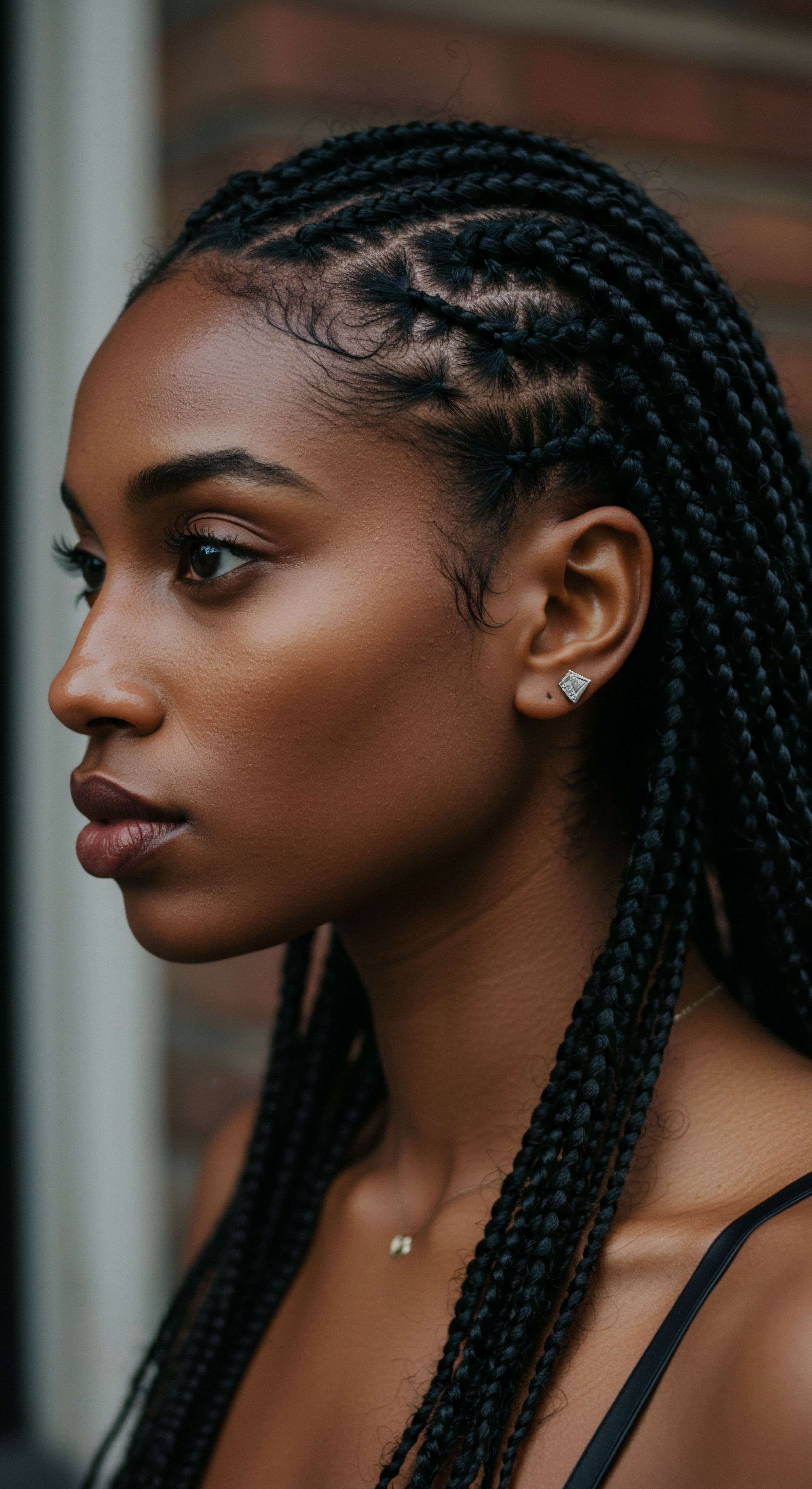
The Biophysics of Hair and Fabric Interaction
The physical interaction between hair and fabric is a subject of scientific study, particularly in the realm of tribology, which examines friction and wear. Hair, especially textured hair, is susceptible to mechanical damage from friction due to its helical structure and the increased surface area for contact. Cotton, a widely used fabric for pillowcases, possesses a rough surface at a microscopic level, creating significant friction with hair fibers. This friction generates mechanical stress, leading to cuticle abrasion, frizz, and ultimately, breakage.
In contrast, silk, derived from the cocoons of silkworms, exhibits a remarkably smooth surface due to its protein composition and tightly packed fibers. This smoothness translates to a significantly lower coefficient of friction when hair glides across it. The reduction in friction is not merely a comfort; it is a critical factor in preserving the hair’s structural integrity.
When hair experiences less mechanical stress, its cuticle layers remain flatter and more intact, effectively sealing in moisture and protecting the delicate cortex beneath. This sustained protection directly contributes to hair’s elasticity, as the internal protein bonds, which grant hair its stretch and rebound capabilities, are less disrupted by external forces.
| Fabric Type Cotton |
| Surface Texture Rough, absorbent |
| Impact on Hair Cuticle High friction, cuticle lifting, abrasion |
| Effect on Hair Moisture Absorbs moisture from hair |
| Fabric Type Silk |
| Surface Texture Smooth, less absorbent |
| Impact on Hair Cuticle Low friction, cuticle preservation |
| Effect on Hair Moisture Helps retain hair's natural moisture |

Can a Bonnet Truly Alter Hair’s Internal Hydration Mechanisms?
The notion of moisture balance in hair is a dynamic interplay between internal water content and environmental humidity. Hair is hygroscopic, meaning it readily exchanges water with the air. In dry environments, hair loses water to the atmosphere, becoming dehydrated and less elastic. Conversely, in humid conditions, hair absorbs water, which can lead to swelling, frizz, and a temporary loss of style.
A silk bonnet functions as a semi-occlusive barrier, moderating this exchange. While it does not entirely seal off the hair, its low permeability compared to open air or porous cotton creates a microclimate around the hair. This microclimate helps to slow down the rate of moisture evaporation from the hair shaft, especially in dry sleeping environments, thereby assisting the hair in maintaining its optimal water content.
A compelling example of this principle is found in studies on hair hygrometers, instruments that measure humidity based on the length changes of human hair. Research has shown that human hair can change length by approximately 3% from dry to humid conditions due to water absorption. More specifically, when a hair shaft is hydrated, its radius expands by 14%, but its length expands by only 2%. This anisotropic swelling highlights how hair responds to water, becoming more pliable and elastic when properly hydrated.
By consistently creating a stable, slightly more humid environment for the hair overnight, a silk bonnet contributes to maintaining this crucial internal hydration, which in turn supports hair’s inherent elasticity and reduces its susceptibility to mechanical damage. This sustained hydration prevents the hair from becoming overly dry and brittle, a common precursor to breakage.

Beyond Science ❉ Cultural Echoes of Hair Protection
The practice of covering hair for protection and preservation is not a modern invention; it resonates with deep cultural and historical roots across the globe, particularly within communities of African descent. Head coverings, in various forms, have served multiple purposes, from indicating social status and religious adherence to providing practical protection against the elements.
Historically, in many African societies, headwraps were worn to protect hair and scalp from harsh sun and dust. This functional aspect seamlessly blended with cultural expression, where patterns, colors, and tying styles conveyed intricate messages. During periods of enslavement, head coverings were sometimes enforced as symbols of subservience, yet enslaved African women ingeniously transformed them into tools of communication and resistance, using specific tying methods to send coded messages.
The resurgence of protective head coverings, including silk bonnets, within the natural hair movement, carries this legacy forward. It signifies a reclamation of self-care practices rooted in ancestral wisdom, recognizing that hair is not merely an aesthetic feature but a living part of identity and heritage. The consistent use of a silk bonnet today, therefore, is not just a scientific application of reduced friction and moisture retention; it is a continuation of a profound cultural dialogue about preserving hair’s health, celebrating its natural state, and honoring traditions of self-care that span generations.
- Cultural Continuity ❉ Head coverings carry historical significance, serving as a link to ancestral hair care practices.
- Environmental Shielding ❉ Bonnets offer protection from dry air, dust, and environmental stressors during sleep.
- Identity and Self-Care ❉ The practice embodies a conscious choice to prioritize hair health and celebrate natural beauty.
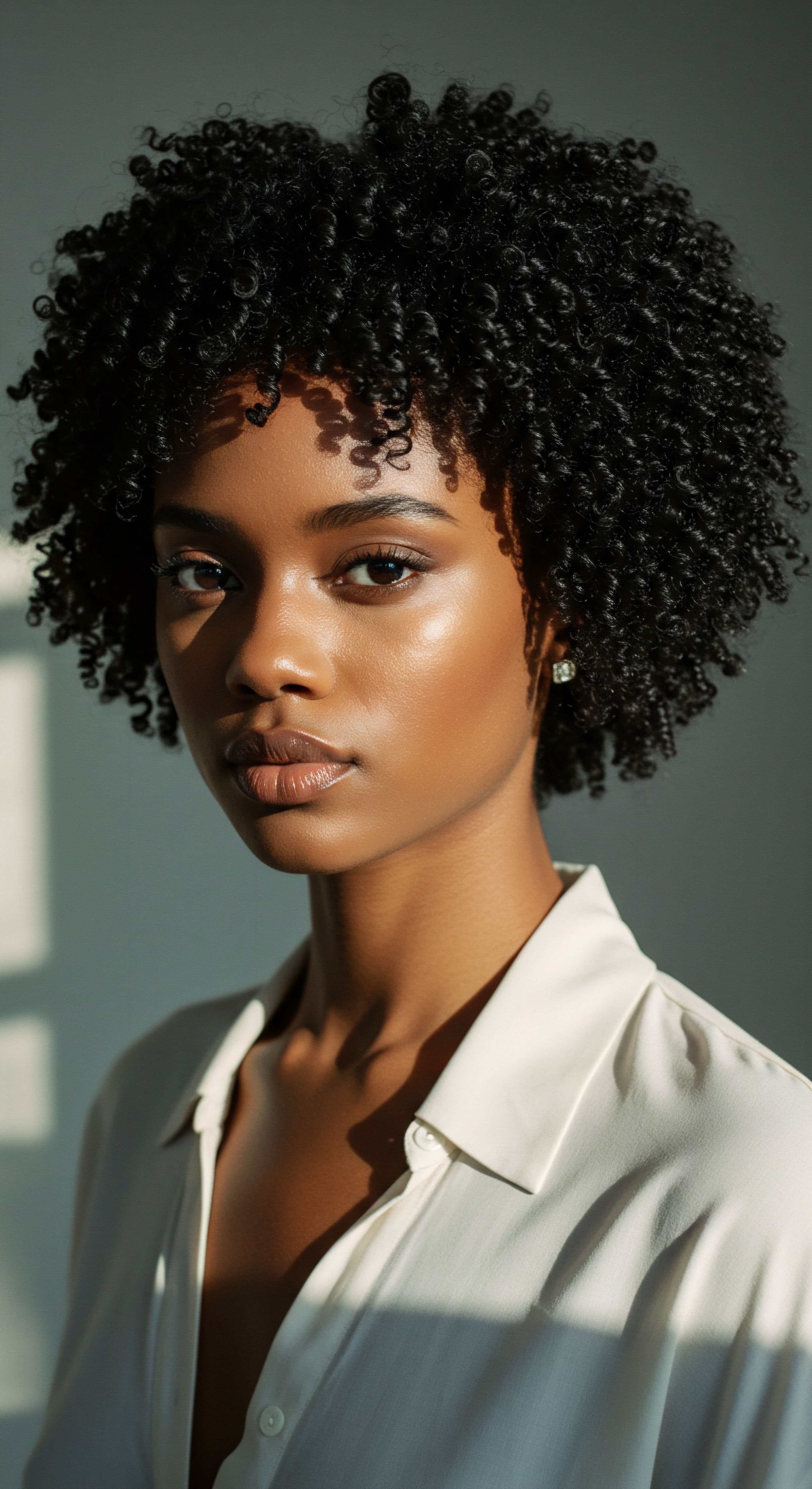
Sleep Quality and Hair Resilience
The impact of consistent silk bonnet use also extends to the broader context of sleep quality and its physiological effects on hair. Adequate, restorative sleep is crucial for overall bodily functions, including cellular repair and hormone regulation, which in turn influence hair growth and health. Chronic sleep disruption can elevate stress hormones like cortisol, which may negatively affect the hair growth cycle and contribute to shedding.
While a silk bonnet does not directly alter sleep patterns, it indirectly contributes to a more conducive sleep environment for hair. By preventing discomfort from tangled hair or a dry scalp, it may promote more undisturbed rest. A person who wakes with less tangled, softer hair, free from the dryness and frizz that rough pillowcases can induce, may experience a subtle yet cumulative reduction in morning hair stress. This reduction in daily hair trauma, combined with the general benefits of improved sleep, can collectively support hair’s long-term resilience and its capacity to maintain elasticity and moisture balance.

Reflection
The journey through the intricate world of hair, from its fundamental structure to the nuanced practices of care, reveals a quiet truth ❉ the consistent use of a silk bonnet offers a gentle yet profound affirmation of hair’s vitality. It is a daily gesture that honors the delicate balance of moisture and the inherent flexibility of each strand, allowing hair to rest, recover, and greet the new day with renewed grace. This simple act, rooted in both scientific understanding and enduring cultural wisdom, stands as a testament to the power of thoughtful, consistent care in cultivating true hair wellness.

References
- JD Institute of Fashion Technology. (2021). Headwraps ❉ History and Evolution.
- Power Your Curls. (2024). Hair Elasticity Explained.
- Wilderness Safaris. (2015). The history & meaning of head wraps across Africa.
- K18 Hair PRO. (2024). What Is Optimal Hair Hydration?
- Harley Street HTC. (2022). Hair Structure, Anatomy and Composition.
- Girl of a different Era. (2020). The History of Women’s Head Covering.
- RPR Hair Care. (2024). The Science of Hair Hydration ❉ How to Fix Dry Hair.
- Dyson. Hair Science ❉ Hair damage and the Dyson solution.
- Fabulive. (2024). Hair Elasticity 101 ❉ Why is My Hair Stretchy?
- argalys. (2023). What is Keratin? An essential protein for hair beauty.
- LuxCare. The Evolution of Headscarves ❉ from ancient Egypt to the red carpet.
- Philip Kingsley. (2022). The Hair Structure.
- Eazicolor Professional. (2024). The Role Of Protein In Hair Health.
- The Clifford Clinic. (2024). Unraveling The Myth ❉ Can Silk Pillows Prevent Hair Loss?
- Turbie Twist. (2024). Head Wraps and Culture ❉ What You Need to Understand.
- Kaizen Hair Studio. (2025). Houston Hair Care ❉ Surviving Humidity with Style.
- Science-y Hair Blog. (2014). Managing Elasticity and Porosity in Hair.
- The Open Dermatology Journal. (2019). The Benefits Of Occlusive Dressings In Wound Healing.
- Science Projects. Effects of Humidity.
- Hata, T. (1987). Low molecular weight hydrolyzed sericin as an excellent hair conditioner.
- Breakspear, S. et al. (2018). Anisotropic swelling due to hydration constrains anisotropic elasticity in biomaterial fibers. arXiv preprint arXiv:1809.07342.
- YouTube. (2018). A Brief History on Head Wraps | BLACK GOLD | Black History Month Series.
- Jelani Travel. Head Wrap History – From South Africa to Global Fashion.
- Clinikally. (2024). Impact of Sleep Deprivation on Hair Health.
- Slipssy. (2025). Slipssy’s First-Night Effect ❉ How Reducing Friction Transforms Your Hair Overnight.
- sonson. (2021). The History of Headwraps and Black Culture.
- ResearchGate. (2024). Potential of silk proteins in cosmetics.
- The History of Headwraps ❉ Then, There, and Now. (2024).
- Journal of Emerging Technologies and Innovative Research. (2024). Silk Protein ❉ A Boon to cosmetics.
- trichology. (2024). Sleep And Hair Growth ❉ Enhance Your Hair Health Through Better Sleep.
- NaturallyCurly – Beautycon.com. (2011). Elasticity and Healthy Hair.
- Treatment Rooms London. (2024). Can A Lack of Sleep Cause Hair Loss?
- PubMed. Hair breakage during combing. III. The effects of bleaching and conditioning on short and long segment breakage by wet and dry combing of tresses.
- Silkbiotic. (2024). The Scientifically Proven Benefits of Silk for Skin and Hair.
- ResearchGate. (2024). Hair breakage during combing. II. Impact loading and hair breakage.
- arXiv. (2024). Anisotropic swelling due to hydration constrains anisotropic elasticity in biomaterial fibers.
- Revolutionary Silk Protein Patents Transforming Hair Care ❉ Sericin’s Impact on Beauty. (2024).
- DiStefano Hair Restoration Center. (2025). Does Sleep Affect Hair Health?
- Centre Clauderer. Hair and sleep ❉ the importance of the night for hair health.
- The Chic Icon. (2024). Secret Benefits of Silk for Hair and Skin.
- Clinikally. (2024). How Mulberry Silk Transforms Your Skin and Hair.
- American Society of Anesthesiologists (ASA). (2022). Statement on Surgical Attire.
- PubMed Central. (2024). The biomechanics of splitting hairs.
- TimelesslyMirna. (2024). Why Hair Elasticity is Important.
- The Open Dermatology Journal. (2019). A comparative histological study on the skin occlusion performance of a cream made of solid lipid nanoparticles and Vaseline.
- The Clifford Clinic. (2024). Unraveling The Myth ❉ Can Silk Pillows Prevent Hair Loss?
- Cosmetics & Toiletries. (2020). Defying Damage ❉ Understanding Breakage in Afro-textured Hair.
- ResearchGate. Schematic representation of the hair follicle occlusion method.